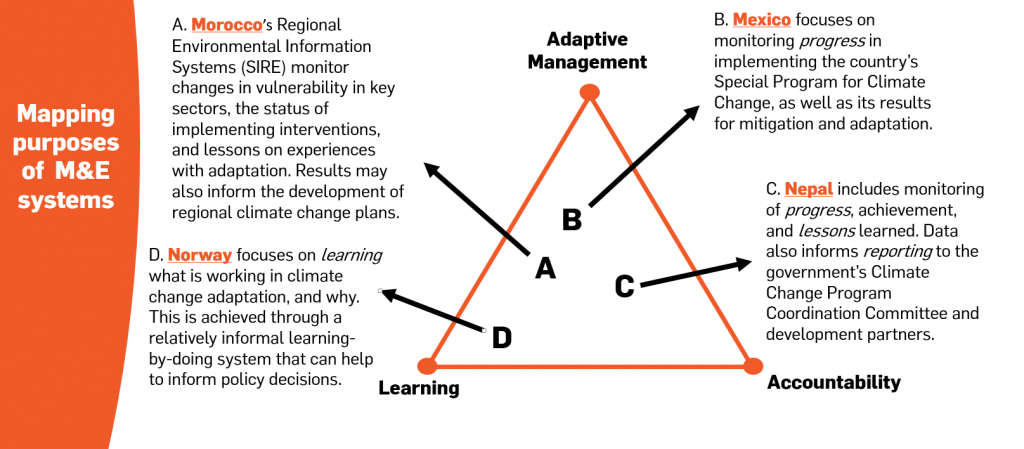The Paris Agreement’s inclusion of an adaptation goal has raised adaptation’s profile in the international arena. Recognizing this, parties to COP 21 established a Technical Examination Process on Adaptation (TEP-A)—complementing a pre-existing process for mitigation—as a contribution to enhanced action prior to 2020. The first meetings under this process—known as the Technical Expert Meeting on Adaptation, or TEM-A—are taking place May 24–25, 2016. Their overarching theme will be reducing vulnerability and mainstreaming climate change adaptation, including through the national adaptation plan (NAP) process.
The NAP Global Network has already begun contributing case studies and insights on institutional arrangements for working across sectors (see here), and enhancing implementation through consideration of a wide range of sources of finance for putting NAPs into action (see here). The Network’s upcoming work will focus on addressing two other pressing, interlinked issues on the TEM-A agenda: working across different levels of governance, and adaptation monitoring and evaluation (M&E) in the NAP process. Presented here are some of the key questions and issues that the Network is currently exploring related to these topics.
Working Across Different Levels of Governance: Key questions
While the Paris Agreement emphasizes that actors at local, municipal and regional levels will have key roles in dealing with and adapting to climate change impacts, there are relatively few clear examples of how these actors’ priorities and potential contributions can be addressed through the NAP process. Many cities and subnational governments are undertaking adaptation planning processes of their own. Furthermore, even at local levels where formal planning processes may not yet exist, communities and citizens are coping with or adapting to the effects of climate change out of necessity. The TEM-A in Bonn will be an initial opportunity to discuss ways of creating intentional and strategic linkages between national and subnational adaptation planning and action. Ongoing work by the Network is also examining this issue, looking to examples to address key questions such as:
- At what stage(s) in the NAP process are subnational actors being engaged, and what arrangements are being made to support their ongoing involvement?
- How can the NAP process take into account action at local levels that could contribute to identification of priorities and implementation of plans—including those led by actors outside formal governance structures, such as community-based organizations or traditional authorities?
- How can a NAP process help to ensure that subnational actors—who play a key role in putting planning into action at local levels—have the financial resources and technical capacity to do so?
Tracking Progress and Learning from Planning and Action
M&E of national progress on adaptation planning and action is another key area of discussion for the upcoming TEM-A, and one that is closely linked to working across scales. National adaptation M&E aims to present the overall picture of progress on adaptation in a country: it can look at progress in the planning process itself, progress in implementing the NAP and/or the changes that result from implementation. Given the integrated nature of the NAP process, national adaptation M&E implies drawing data and information from across sectors and from across scales. This also means that it often needs to identify and draw on existing systems for data collection or M&E. With many cities setting up their own M&E systems, for example, how can this data—which represents an important contribution to a country’s overall progress on adaptation planning—be aggregated and concisely communicated at the national level? National M&E of adaptation is closely linked to working across scales.
Recent work by the NAP Global Network Secretariat in collaboration with GIZ has examined and compared examples of different countries’ approaches to adaptation M&E at the national level, and produced guidance for the development of national adaptation M&E systems. An upcoming international workshop in 2017 will be an opportunity for participating countries to learn from peers about experiences monitoring national progress on adaptation.
National adaptation M&E normally serves some combination of the following purposes, depending on the country context:
- It can serve accountability purposes, reporting to key stakeholders such as taxpayers, donors and/or the Conference of the Parties.
- It can inform “adaptive management,” which is key to the iterative NAP process—tracking progress in national adaptation planning and action on an ongoing basis, and informing updates and course-corrections as needed.
- It can also serve learning purposes, providing important insights into adaptation needs, experiences and accomplishments that can, for example, inform policy decisions.
The “monitoring, reporting and review” component of the NAP process should also help to inform countries’ contributions to this global stocktake on adaptation, which in turn should contribute to assessments of how they can enhance ambition on adaptation.
The diagram below illustrates the extent to which a few countries incorporate these different purposes into their M&E systems.

Source: Price-Kelly, Hammill, Dekens, Leiter & Olivier, 2015
For more information and guidance, read the comparative review and guidebook.
The Network looks forward to feeding these and other experiences and insights of participants involved in NAP processes around the world into the TEP-A process.
Any opinions stated in this blog post are those of the author and do not necessarily reflect the policies or opinions of the NAP Global Network, its funders, or Network participants.